
Keeping it Safe - Expressways, City + Rural
City Driving
City and urban driving require particular alertness. Traffic congestion combined with limited space on the roadway greatly affects driver performance.
When you're driving in the city, decrease speed to give yourself more time to analyze the traffic ahead and identify possible dangers. Slower speed allows more time to determine situations and select the best driving tactic. Slower speed also increases driver reaction time. Look far ahead in traffic to check for hazards and potential problems. Keep the entire area in mind. Be prepared for the unexpected and leave yourself enough room to safely maneuver. Be prepared to brake when you see brake lights ahead, or when arriving at intersections. Be aware of stalled or parked cars, which could have passengers entering or exiting their vehicle.
Automotive performance is also affected by city driving. Increased braking causes extra wear and tear on your brakes. Overheating of the engine can result from idling in stop and go traffic. Poor fuel efficiency is yet another negative effect city driving has on your vehicle.
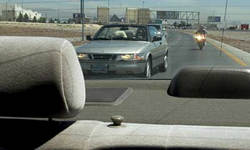 Make city driving safer by driving with the flow of traffic within the legal speed limit. Do not drive in another vehicles’ blind spot. Avoid driving side by side for lengths of time. Try not to drive bunched up with other automobiles. Back off and leave enough room between you and the auto ahead. You should be able to see their tires. If all you see is a bumper, you are too following to close.
Make city driving safer by driving with the flow of traffic within the legal speed limit. Do not drive in another vehicles’ blind spot. Avoid driving side by side for lengths of time. Try not to drive bunched up with other automobiles. Back off and leave enough room between you and the auto ahead. You should be able to see their tires. If all you see is a bumper, you are too following to close.
Plan ahead and choose a safe route based on the time of day and the volume of traffic. Check your local DOT website or listen to the local radio for traffic information and changes to roadways due to construction.
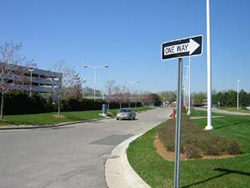 One-way street traffic tends to flow smoother than two-way. One-way streets can be safer too, because there is no oncoming traffic to compete with. However, watch out for tailgaters and rear end collisions. And especially make sure you are going the correct direction on the one-way street.
One-way street traffic tends to flow smoother than two-way. One-way streets can be safer too, because there is no oncoming traffic to compete with. However, watch out for tailgaters and rear end collisions. And especially make sure you are going the correct direction on the one-way street.
Toll roads usually save time and reduce wear on your automobile. Toll roads are normally less congested than public roadways. Do not forget to have enough money for the toll. Toll booths where change is made takes more time. Keep enough change, especially quarters, on hand for quicker passage. Or best, buy a car tag or prepaid toll pass. These are less expensive and save tremendous time when going through the toll station.
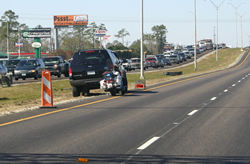 City driving has its' own set of hazards you must deal with. Parked or stalled cars can hinder your view of the cross traffic. There are frequently detours because of road repairs or traffic accidents. Two-way left turn center lanes can be dangerous. Look out for oncoming cars making left turns out of these lanes. And keep an attentive eye out for bicyclists and pedestrians.
City driving has its' own set of hazards you must deal with. Parked or stalled cars can hinder your view of the cross traffic. There are frequently detours because of road repairs or traffic accidents. Two-way left turn center lanes can be dangerous. Look out for oncoming cars making left turns out of these lanes. And keep an attentive eye out for bicyclists and pedestrians.
People with a lot of driving familiarity in urban areas tend to become overconfident and begin taking shortcuts in good driving techniques. While drivers with less experience in the city are usually nervous, often confused and sometimes lost in the busy traffic. These two types of drivers, overconfident and inexperienced, come together on the busy roadways. This situation is hazardous unless all drivers do their best to follow all traffic laws.
 Taking risks in making left turns, driving without both hands on the wheel, not giving the proper turn signal within the required 100 feet of an intersection, driving too fast for existing road conditions, tailgating and rude behavior, talking on cell phones, putting on makeup or adjusting GPS are typical urban driving no no’s. You've probably observed them all. You may even be guilty of some of them yourself. But keep in mind, you may be stopped by the police and given a ticket. Or worse, you could be killed or seriously injured.
Taking risks in making left turns, driving without both hands on the wheel, not giving the proper turn signal within the required 100 feet of an intersection, driving too fast for existing road conditions, tailgating and rude behavior, talking on cell phones, putting on makeup or adjusting GPS are typical urban driving no no’s. You've probably observed them all. You may even be guilty of some of them yourself. But keep in mind, you may be stopped by the police and given a ticket. Or worse, you could be killed or seriously injured.
So always use good judgment in urban traffic, and err on the side of caution. Obey all traffic laws and procedures, and prepare in advance the route you will take. Recognize the limits and abilities of your vehicle, and keep it suitably maintained. Drive courteously, and enjoy the city.
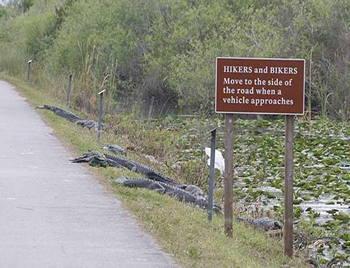
Rural Driving
Many rural roads have dirt shoulders, or no shoulders at all, which leaves no room for error. Narrow roads limit your ability to evade oncoming hazards. Rural drivers’ who become over confident of familiar roadway tend to speed, and use careless driving techniques. Increased speed causes drivers use the entire roadway when making curves, rather than keeping to their own side of the lane.
At the same time, travelers and sight-seers enjoy driving country roads. These drivers are usually unaware of the many curves, speeding pick-up trucks, and obstacles on a rural road. With no shoulders to prevent collision, all drivers must follow the speed limits and stay in their own lane to avoid a serious head on collision.
Rural roads are often unpaved, diminishing your tire grip and overall traction. These roads often lack road signs and markers that are all over the place in the city. Sometimes, this makes it hard to foresee intersections, curves, and dead ends.
Trees and tall agricultural plants, like corn or wheat, make rural roads even more treacherous because they block the driver’s view of intersections, road markers, and especially railroad crossings.
Of the many obsticals to look out for on rural roadways, the most widespread dangers are animals. Animals, including livestock and deer, are unpredictable. Deer are especially quick and jump out unexpectedly. Hitting large animals tears up your vehicle, and can kill you.
You also need to be careful to look for people on rural roads. There are no sidewalks so people commonly walk on these roads. If you see animals or people ahead of you, reduce your speed and get ready to predict their actions.
Observe warning signs for curves, bridges, or cattle crossings. There are very few warning signs in rural areas, so if you see one, know that it is there for a reason. Adjust your speed for the condition of the road, especially when approaching oncoming vehicles.
Pay special attention to farm equipment. Farm to Market roads are to be shared with large equipment and tractors, normally oversized, which can be difficult to pass. If you do not have a completely clear view ahead, follow behind the tractor until it turns off the road. Farm equipment usually doesn't travel far, so be patient.
According to the University of Minnesota,
- Three-quarters of the public roadway mileage in the United States—more than 3 million miles of roads—is considered rural.
- One-fifth of U.S. population lives in rural areas, yet two-fifths of the vehicle miles traveled and three-fifths of the 42,000 fatal crashes each year occur on rural roads.
- Crash victims are five to seven times more likely to die if arrival to a hospital exceeds 30 minutes. The time between a crash and arrival at a hospital averages 34 minutes in urban areas and 52 minutes in rural areas.
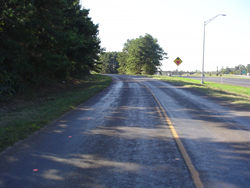 While U.S. Census figures show that about two out of 10 (21 percent) Americans live in rural areas, the Federal Highway Administration (FHWA) has found that about six out of ten (57 percent) of highway deaths happen on roads that it considers rural.
While U.S. Census figures show that about two out of 10 (21 percent) Americans live in rural areas, the Federal Highway Administration (FHWA) has found that about six out of ten (57 percent) of highway deaths happen on roads that it considers rural.
And the people dying on rural roads are not just rural residents. In fact, more than half (53 percent) of rural fatalities in the United States in 2005 involved at least one driver from an urban area.”
There are numerous reasons for the high rate of fatal collisions in rural America. Country back roads, with light traffic and lovely scenery, can simply lull drivers into a false sense of safety. An over-relaxed comfort level can lead to driving at unsafe speeds. Motorists may become sidetracked, tired, unbelted or impaired, all of which boost the likelihood of a crash. Additionally, emergency response time to a rural crash and hospital transport can be prolonged and thus increase the death rate.
 Expressway Driving
Expressway Driving
Highway driving is comparable to city driving. Like city roads, highways, also called expressways, are typically well maintained and jam-packed with traffic. However, the speeds drivers maintain on the highway are usually much faster than the speeds maintained on inner city roads. Because of the high speeds, you must be cautious to keep sufficient space around your vehicle at all times to ensure your safety.
When another driver makes a driving error, you need time to act in response. You can give yourself this time by keeping sufficient space between your vehicle and the vehicles around you. Keep a "space cushion" on all sides of your car. An area of open space surrounding your vehicle is known as a space cushion. It allows you the space needed to brake or maneuver when faced with a perilous driving situation.







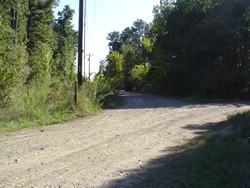
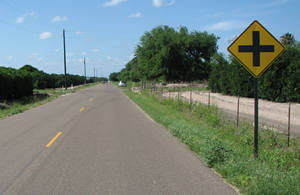
 Expressway Driving
Expressway Driving







